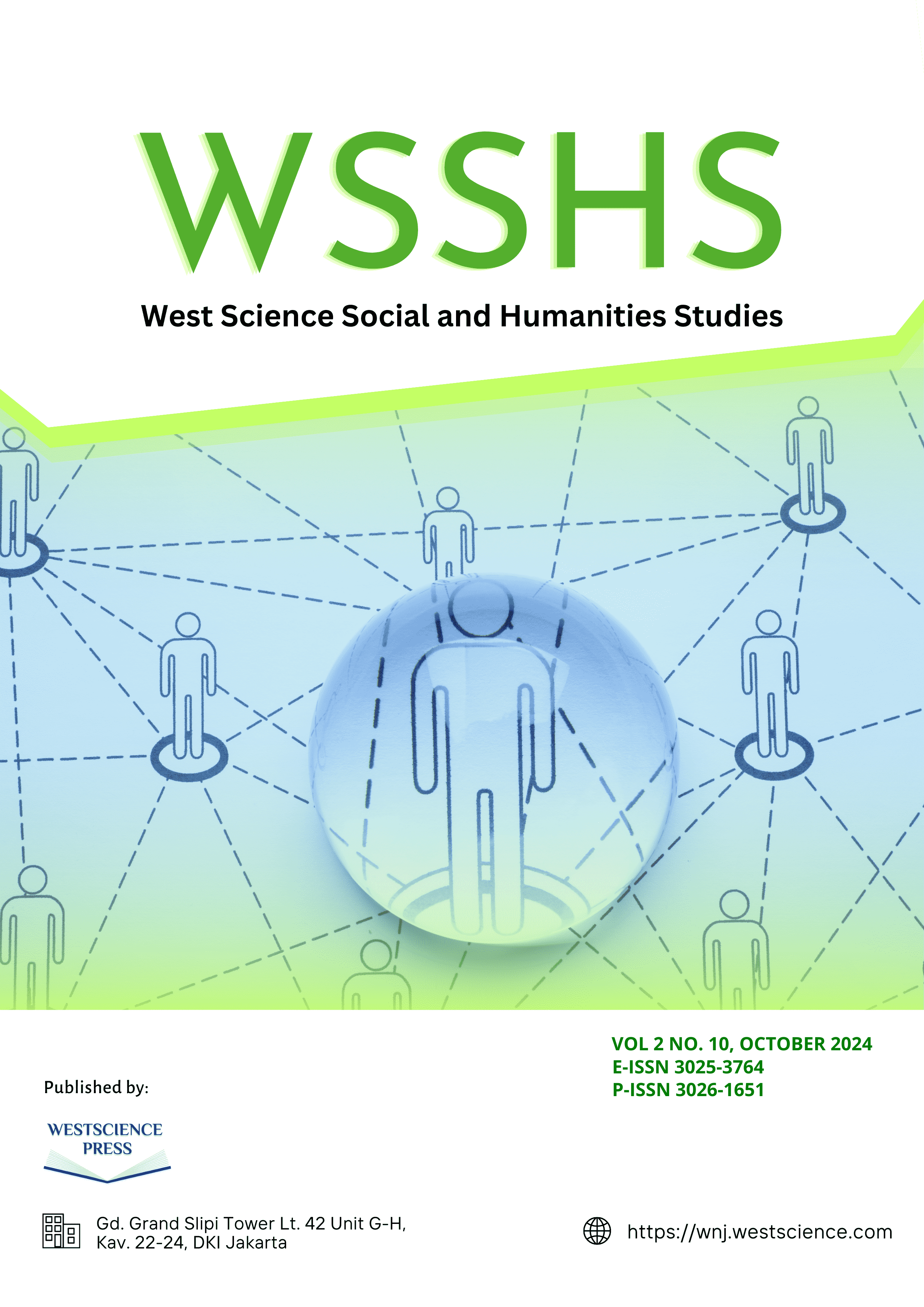Implementing Children's Rights in Vietnamese Families: Cultural and Socioeconomic Influences
DOI:
https://doi.org/10.58812/wsshs.v2i10.1320Keywords:
Family culture, Socioeconomic Factors, Children’s right, Vietnamese Family, Cultural InfluencesAbstract
Family and family culture are compelling research topics for Social Science researchers. The complexity of this category requires an approach tailored to the research field. In legal science, the family is studied as an entity encompassing relationships regulated by law, such as those between spouses and between parents and children. However, a more practical approach to researching the family from a legal perspective necessitates a general understanding of family culture and its specific impact. As contemporary family culture values continue to evolve, traditional values are sometimes overridden, giving children more autonomy. In this article, we aim to outline the fundamental aspects of family culture and explore the impact of changing family culture on upholding children's rights in Vietnam.
References
Q.-H. Vuong and T. D. Tran, “The Cultural Dimensions of the Vietnamese Private Entrepreneurship,” SSRN Electron. J., 2009, doi: 10.2139/ssrn.1442384.
B. Rache, Vietnam’s children in a changing world. 2006.
N. M. Thang and B. M. Popkin, “In an era of economic growth, is inequity holding back reductions in child malnutrition in Vietnam?” Asia Pac. J. Clin. Nutr., vol. 12, no. 4, 2003.
H. T. Nguyen, “Child maltreatment in Vietnam: prevalence and associated mental and physical health problems,” 2006, Queensland University of Technology.
P. L. Huong and G. W. Fry, “Education and Economic, Political, and Social Change in Vietnam,” Educ. Res. Policy Pract., vol. 3, no. 3, pp. 199–222, Jan. 2004, doi: 10.1007/s10671-005-0678-0.
N. M. Tri, “Culture as a dynamic product of socially and historically situated discourse communities: A review of literature,” Minist. Sci. Technol. Vietnam, vol. 66, no. 1, pp. 121–128, Apr. 2024, doi: 10.31276/VMOSTJOSSH.66(1).121-128.
H. M. Nguyen, “Family - From a cultural approach,” 2011, Scientific bulletin (No. 3). [Online]. Available: https://thuvienbinhduong.org.vn/Resources/Docs/PDF/2013/28-6/Bài 13.pdf
D. Vu, Dictionary of Psychology. Hanoi: Encyclopedia, 2008.
N. Van Le, “Family Culture,” J. Fam. Gend., vol. 3, 2011.
D. T. Ngo, Culture, ethnic culture & Vietnamese culture. Social Science, 2006.
T. M. N. Dao, “Vietnamese Family Culture: Traditional and Modern Values,” Vietnamese Soc. Sci., 2014.
N. Van Le, Family and Family Transformation in Vietnam. Hanoi: Social Science, 2012.
T. B. Nguyen, “The performance of basic functions in present day Vietnamese families,” Freie Universität Berlin, 2013.
P. D. Doan, “Understanding the functions and characteristics of Vietnamese families - from a historical sociological perspective,” Sociology, vol. 2, no. 46, pp. 3–11, 1994.
D. C. Nguyen, “Modernization and the problems with the basic functions of Vietnamese families today,” Sociology, vol. 4, no. 124, pp. 103–113, 2013.
V. Bader, “Culture and Identity,” Ethnicities, vol. 1, no. 2, pp. 251–273, Jun. 2001, doi: 10.1177/146879680100100206.
H. K. Anheier, “Cultures, Values, and Identities: What Are the Issues?,” Glob. Perspect., vol. 1, no. 1, p. 11755, 2020.
M. Singh and G. Siddique, “Cultural Integration of Inter-State Migrants in Asansol, West Bengal,” Sp. Cult. India, vol. 8, no. 3, pp. 86–99, Nov. 2020, doi: 10.20896/saci.vi0.1073.
N. Riggle, E. Lambert, and J. Schwenkler, “Transformative Expression,” Becom. Someone New Essays Transform. Exp. Choice, Chang., pp. 162–181, 2020.
M. L. Jones, Believe: The one simple area of focus that can make your transformations and Continuous Improvement culture truly sustainable. BookPOD, 2024.
M. T. Nguyen, “Family and Vietnamese family culture today,” Cult. Arts, vol. 362, 2014.
T. T. N. Tran, “Traditional and modern family culture,” Cult. Arts, vol. 312, 2010.
D. A. Briley, M. W. Morris, and I. Simonson, “Reasons as carriers of culture: Dynamic versus dispositional models of cultural influence on decision making,” J. Consum. Res., vol. 27, no. 2, pp. 157–178, 2000.
C. M. McWayne and G. Melzi, “Immigrant Children and Families: Committing to Cultural Inclusion in Early Childhood Education and Care Settings,” Educ. Forum, vol. 88, no. 4, pp. 492–517, Oct. 2024, doi: 10.1080/00131725.2024.2383146.
X. Zou, K.-P. Tam, M. W. Morris, S. Lee, I. Y.-M. Lau, and C. Chiu, “Culture as common sense: Perceived consensus versus personal beliefs as mechanisms of cultural influence.,” J. Pers. Soc. Psychol., vol. 97, no. 4, pp. 579–597, Oct. 2009, doi: 10.1037/a0016399.
D. Sue and S. Sue, “Cultural factors in the clinical assessment of Asian Americans.,” J. Consult. Clin. Psychol., vol. 55, no. 4, pp. 479–487, 1987, doi: 10.1037/0022-006X.55.4.479.
J. R. Weeks, D. J. Hernandez, and E. Charney, “From Generation to Generation: The Health and Well-Being of Children in Immigrant Families,” Contemp. Sociol., vol. 29, no. 2, p. 399, Mar. 2000, doi: 10.2307/2654435.
A. G. Huebschmann et al., “Reducing asthma attacks in disadvantaged school children with asthma: study protocol for a type 2 hybrid implementation-effectiveness trial (Better Asthma Control for Kids, BACK),” Implement. Sci., vol. 19, no. 1, p. 60, Aug. 2024, doi: 10.1186/s13012-024-01387-3.
Downloads
Published
How to Cite
Issue
Section
License
Copyright (c) 2024 Minh Tri Nguyen

This work is licensed under a Creative Commons Attribution-ShareAlike 4.0 International License.

















 Instagram
Instagram 